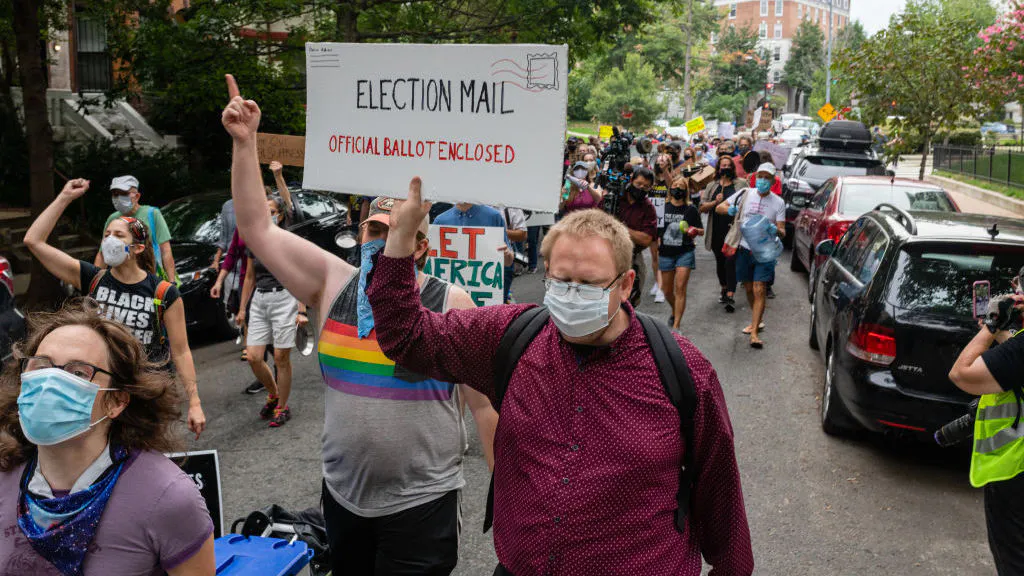Long the subject of bipartisan scorn, the USPS has suddenly become a central component in the latest political frenzy over its role in the upcoming election in November. While the usual partisan nonsense ensues, such as whether or not the desire to defund or reform the perennially failing USPS is honest or cynical, all notion of common sense and journalistic integrity among mainstream outlets has been abandoned in favor of political narratives.
The blunt edge being used by the political Left and the left-leaning mainstream media to drive the claim that “Trump is trying to cheat” into the minds of the electorate is the subject of “mail-in voting.” The Left are arguing that universal mail-in voting simply must be implemented as part of our fight against the COVID-19 pandemic.
In response, Donald Trump has repeatedly raised the subject of fraud when it comes to mail-in voting, with his often inarticulate arguments “debunked” by furious members of the media who claim that “all voter fraud is extremely rare.” CNN delighted in their “gotcha” moment, reporting that “Trump and first lady request mail-in ballots despite attacks.”
What we must recognize is that, at the heart of this argument, lies a politically motivated conflation of two different forms of voting-by-mail.
The two types of voting at the center of this debate are “absentee voting” and “universal mail-in voting.” While the mainstream media will scoff, saying that “no-excuse mail voting or absentee voting — whatever you call it — is essentially the same thing,” they disguise the form of voting which is actually being presented as an alternative to absentee or in-person voting — universal mail-in voting.
The concept of absentee voting usually involves a citizen officially requesting the ability to cast their vote by mail, with some level of verification required. The fundamental difference between absentee voting — the form of mail-in voting Trump participated in — and “universal mail-in voting” — which has already been adopted by California’s state legislature — is that the latter requires that ballots are distributed by mail regardless of whether they were requested or not. If applied broadly, this would mean that millions of ballots would have to successfully traverse the inefficient and often unreliable United States Postal Service network in order to achieve their purpose.
The removal of the requirement for consent from this process introduces a wide range of potential issues, further impacting the already distrusted and fragile electoral process. There are several problems with this proposal which have been raised by the USPS itself, including the risk that “it cannot guarantee all ballots cast by mail for the November election will arrive in time to be counted.” This is amplified by other factors, such as the variation in voting requirements by state, or that “hundreds of thousands of ballots go uncounted each year because people make mistakes.”
However, the root of the danger posed by universal mail-in voting is the intentional removal of any notion of individual security from the process. Combined with the undeniable fact that voter fraud does exist, this new form of voting would provide an unprecedented opportunity for such fraud to run rampant.
In the same manner as voting without the need for identification, universal mail-in ballots disregard the importance of validating the identity of the recipient. By removing all human-to-human contact, how do Democrats suggest that we verify that ballots are legitimate? Moreover, how can we distribute ballots so blindly based on voter data that may be inaccurate? If ballots are sent to people who have moved, or who are ineligible to vote, or even dead, how would we then address their ineligibility when counting their ballot?
These obvious weaknesses are being ignored, and that’s before we consider additional ways they could be exploited, such as ballot harvesting, tampering, or destruction.
The battle over how our democratic processes work is crucial. For it to remain legitimate, fair, and trustworthy, it must be fought on a strictly non-partisan level. By allowing such debates to be held between politicians who desire easier routes to power, umpired by a dishonest media who downplay the clear risk of fraud in favor of an underlying political narrative, we are abandoning the safety of our democracy.
In order to return the notion of democracy to one of stability and trustworthiness, we must wrestle back control of this debate by demanding that we view this issue with the goal of guaranteeing accuracy alongside accessibility, rather than ignoring the clear differences between absentee and universal mail-in voting in order to achieve a political goal.
More from Ian Haworth: Moments In Obama’s Presidency That Fueled Racial Tensions

Continue reading this exclusive article and join the conversation, plus watch free videos on DW+
Already a member?

.png)
.png)

